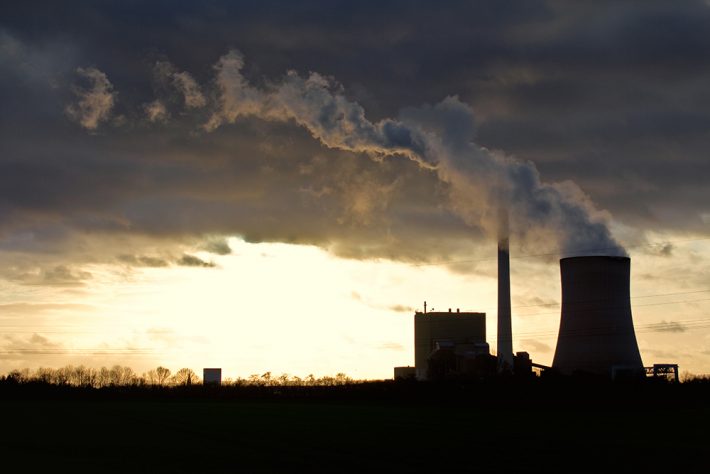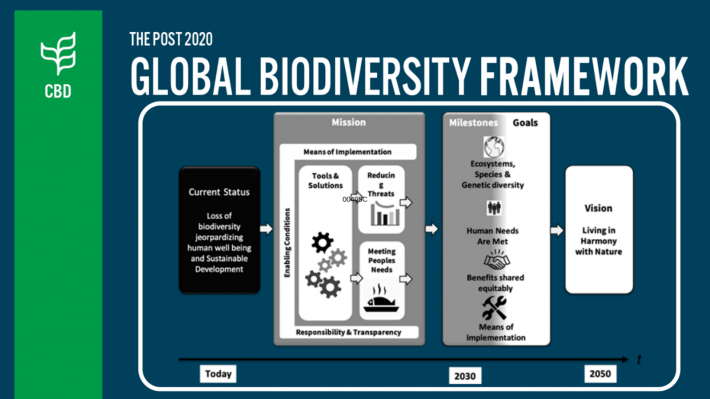Your Guide to the COPs – Part 1 CBD COP15
The first in a series of blogs, written by Enya O’Reilly for the Conservation Ecology SIG, giving an overview of COP15 and COP26. This post introduces the Convention on Biological Diversity COP15.

Your guide to the COPs
Over the coming months, two high-profile international meetings will take place to determine what action the global community will need to take to reverse or slow the harmful effects humans are having on this planet. The Conservation Ecology SIG is producing a a series of blog posts, that will be posted here and on the SIG’s website, to help you navigate through each of these meetings and give you a run down of the main successes (and potential failures!).
The BES and its Scottish Policy Group have published a guide to UN Framework Convention on Climate Change (UNFCCC) COP26. This blog provides an introduction to the other meeting, COP15 of the Convention on Biological Diversity (CBD), which focuses on protecting the world’s biodiversity. A similar guide to COP15 will be launched soon so keep your eye on our policy pages for more updates!
CBD COP15
What is the CBD COP15 and why is the meeting being held this year?
The CBD was first adopted at the 1992 Earth Summit in Rio de Janeiro in response to a growing concern of the increasing number of species extinctions and on-going habitat degradation. The majority of the world’s governments pledged to support and protect the world’s natural environment. Following the Convention entering into force, the Conference of the Parties (COP) has met every two years to discuss its implementation and further development. The COP is the supreme decision-making body for the CBD, and all States that are Parties to the Convention are represented at the meetings. Due to Covid, the 2020 COP meeting (COP15) was postponed and will now take place in two stages, with the first stage taking place virtually, and the second stage aiming to take place in person.
COP15 will focus on the post-2020 global biodiversity framework, which builds on the Strategic Plan for Biodiversity 2011-2020. Through a series of strategic goals and targets, the 2011-2020 plan sought to “take effective and urgent action to halt the loss of biodiversity…”. This plan was focused on ensuring that “by 2020 ecosystems are resilient and continue to provide essential services…”, that “pressures on biodiversity are reduced, ecosystems are restored and biological resources are sustainably used…” and that “appropriate policies are effectively implemented, and decision-making is based on sound science and the precautionary approach”.
Did we meet our goals under the 2011 – 2020 Strategic Plan?
Unfortunately, studies have shown that we met few of these goals in full by 2020 (Butchart et al., 2019; Buchanan et al., 2020). Skip forward to 2021 and species’ extinctions are ongoing and we are experiencing more and more extreme weather conditions, which have been undeniably linked to human-induced climate change.
What are the goals of the post-2020 framework?
The post-2020 framework aims to implement broad-based actions to ensure that, by 2050, a shared vision of living in harmony with nature is fulfilled. A first draft of this framework, drawn up by a dedicated working group, was shared in August that sets out four long-term goals for 2050, each with two or three milestones that will be assessed in 2030, to determine if they are on track with action at the national, subnational land regional levels. With this, the framework also has 21 action-oriented targets that need to be initiated immediately and completed by 2030. The post-2020 framework also acknowledges the need for appropriate recognition of gender equality, women’s empowerment, youth engagement, gender-responsive approaches and the full and effective participation of indigenous peoples and local communities in the implementation of this framework.

Source: Working Group on the post-2020 global biodiversity framework
What will be discussed at the COP15 meetings?
The first half of the meeting that takes place virtually will discuss what is essential to ensure the continuation of the CBD and will include a High-Level Segment that aims to add political momentum to the framework negotiations. At the second half of the meeting, in-person negotiations are expected to resume and a final decision on the post-2020 framework will be made.
A review of the achievements and deliveries of the Strategic Plan 2011-2020 will also be reviewed at the meetings and decisions will be made on topics including capacity building and resource mobilisation in order to support the post-2020 framework.
Where will the in-person meeting take place?
Part two of the COP15 will meet in Kunming, China. Kunming was chosen over China’s capital Beijing as Kunming is in the subtropical southwest province of Yunnan and contains China’s greatest diversity of flora and fauna. The Yunnan province has a wide range of elevations, therefore vegetation types are diverse, and as a result, biodiversity is also high.
Who will attend this meeting and who decides how the framework will be laid out?
The meeting will be attended by the Parties to the Convention, which is made up of representatives from 196 countries and who are the governing body of the CBD. Discussions will be led by the Minister of Ecology for China, Li Ganjie.
Some Parties to the Convention have already made it clear that they would like the post-2020 framework to be more ambitious. For example, Costa Rica, the Seychelles, United Arab Emirates, Monaco, Gabon and Mozambique are keen to raise awareness of the climate and biodiversity emergency and encourage change. Similarly, the EU, Norway and Canada are strong supporters for change. On the opposite end, there is concern that Argentina and Brazil will oppose any forest-related targets.
When will the meeting be held?
The first part of the meeting is due to take place between the 11th and 15th October 2021, with the second half taking place in Kunming from the 25th April to the 8th May 2022. With the passing of time since the last CBD COP and the ongoing destruction of nature, it is vital that these meetings now go ahead as planned in the coming months. And when they do happen, we will report back on the outcomes of those meetings!
The author
Enya is a PhD student with RSPB and the University of East Anglia, exploring quantitative methods for species selection in the development of multi-species ecological indicators. In the future she hopes to work within science policy, to support the application of science and research into land management and policy decisions that will ensure the sustainability and health of biodiversity and ecosystems. Twitter: enya_oreilly
The Conservation Ecology SIG provides a platform for facilitating the exchange of information between theoretical ecologists, applied ecologists and practitioners interested in conservation issues. The Conservation Ecology group is open to everyone, both BES members and those who have not engaged with the BES before; we seek to include the widest diversity of views, experiences and contributions as possible.
Like what we stand for?
Support our mission and help develop the next generation of ecologists by donating to the British Ecological Society.